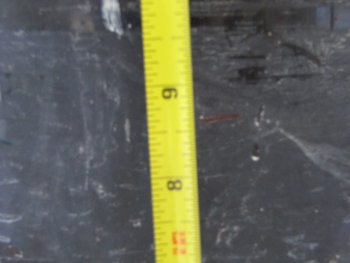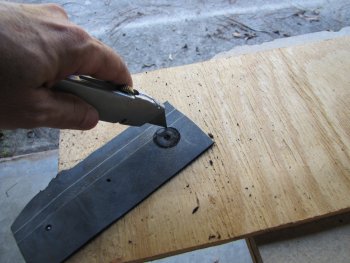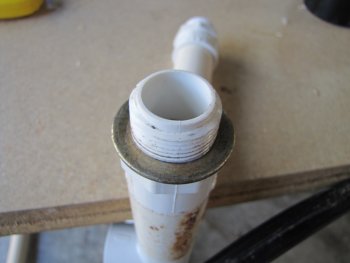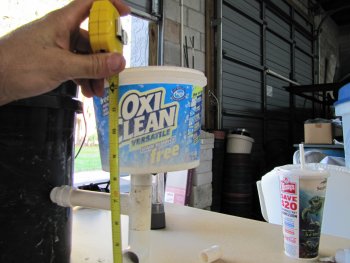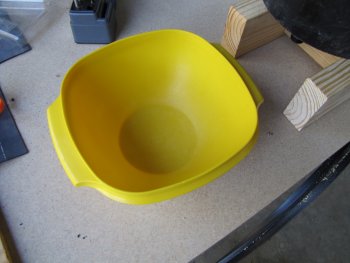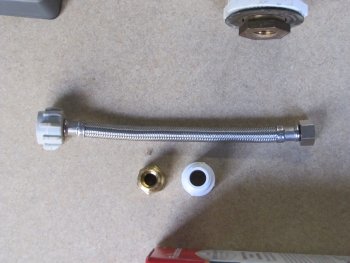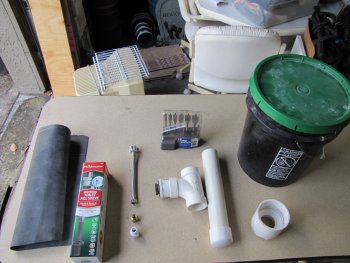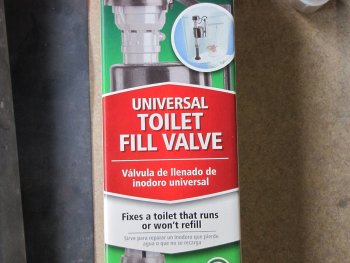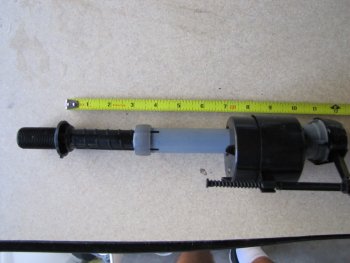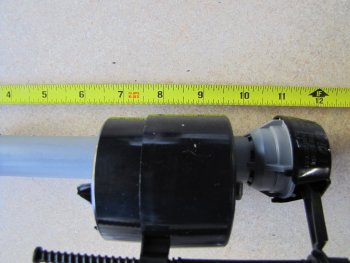Looking for Automatic Chicken Waterer Parts List?
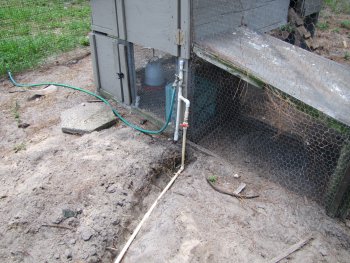
The most important part of this project is a constant water supply. This water supply is under pressure. I am not sure if a standard toilet fill valve will work on a low pressure or gravity feed system. It could be tested with a few fittings and an afternoon. The ball valve is important in case this thing tips over or the bucket or cup develops a crack. Then the water can be shut off at the source and still have water in the chicken coop area.

All the water supply lines are in place and ready to place the bucket reservior in place and connect. I turned the water on one time to flush the line and have nice fresh water for my new valve. I am sure the sand is not friendly to it.
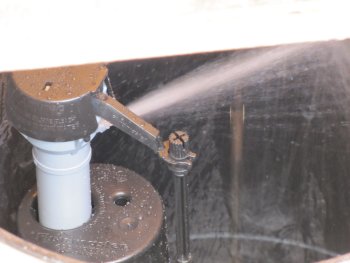
Ok. The bucket is now filling up and we can field test the cup assembly. The valve can be adjusted now for the top height of the water to come up or down by 1 or 2 inches. The spread is still about 3 1/2″.
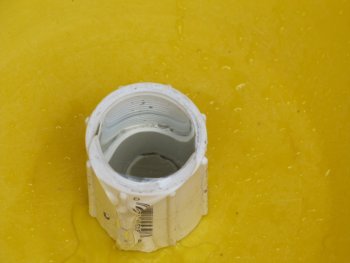
Ok we are in business for the moment. Water is coming into the cup. This is a plus. Now to see what happens next.

Still filling up and seems to be working. Is this it?
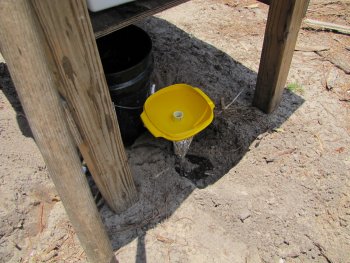
Here we go, filled up to the top and is running over. Time to adjust the toilet fill valve and bring the water level down an inch or so.

AAAAHHHHHHH!!!!!!
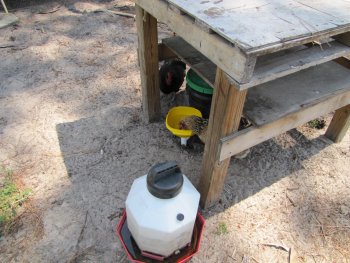
Seems to be working out, the other watering device is right there. All dirty as usual. They have been drinking out of the other one for almost a year now. I tried to put the new automatic watering system in a position where they cannot poop in it.
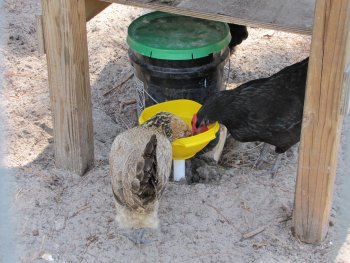
Added a lid and we are now on a path to better living. This project was well worth the effort. I had many ideas and PVC seems to bring it together. PVC also helps it to be servicable. A cup or other contraption could have been caulked in place, but that can never be cleaned without turning it all upside down. I have an idea for a tee handle to be put on the threaded coupler inside the cup so it can be removed easier. After a few days it did not want to come off.
Link to the next Automatic Chicken Watering System article with several weeks of use.

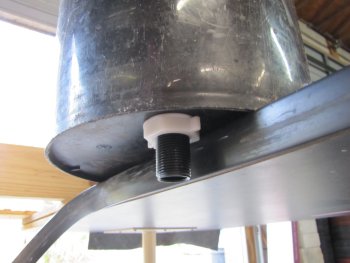
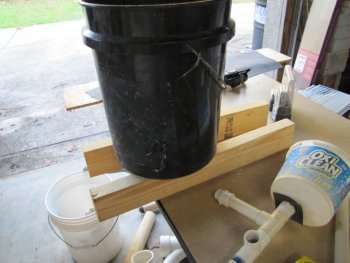
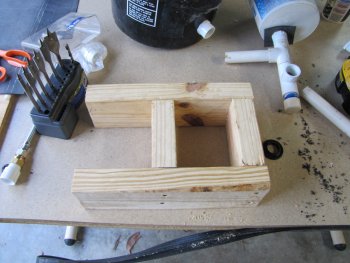
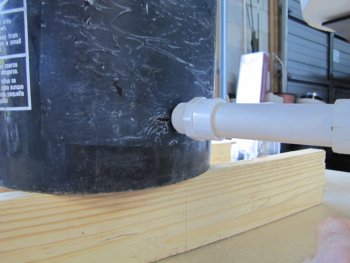
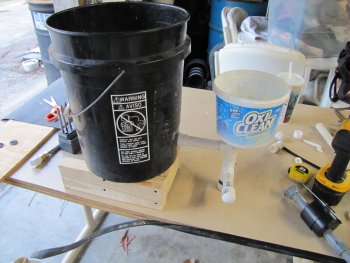 Ok we are connected and ready to water test. After water testing, I found this cup container to be too flimsy and I switched to the tupperware bowl, which worked out much better. I placed a tee on the pipe coming out of the bucket reservior to go down to a cap that is at the right size to help hold up the cup assembly. I also placed another tee so that I could maybe put another cup in place near this one or even in another cage.
Ok we are connected and ready to water test. After water testing, I found this cup container to be too flimsy and I switched to the tupperware bowl, which worked out much better. I placed a tee on the pipe coming out of the bucket reservior to go down to a cap that is at the right size to help hold up the cup assembly. I also placed another tee so that I could maybe put another cup in place near this one or even in another cage.